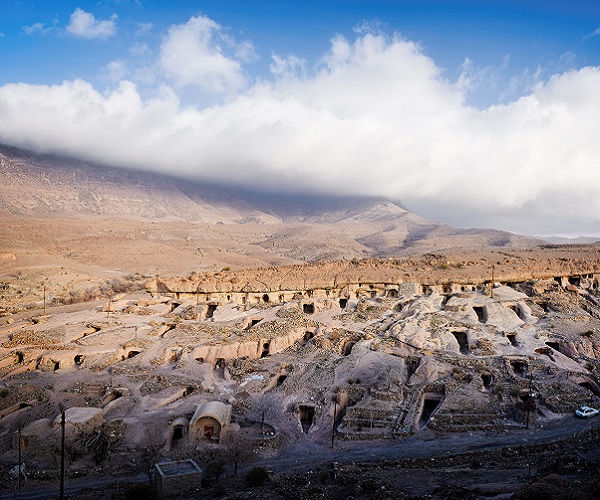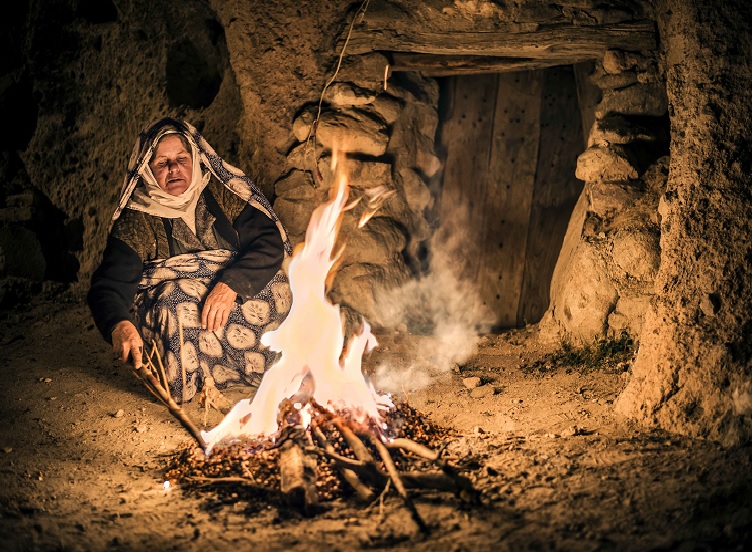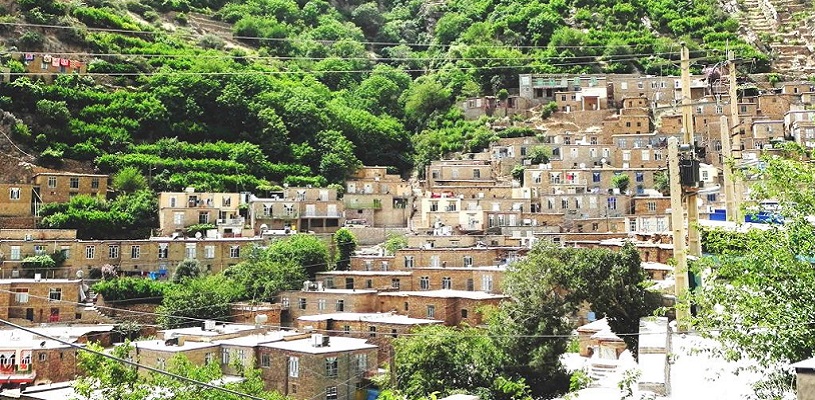
Meymand Village | Kerman, Iran | Rocky Village
Before cities were born one after another in Iran, people used to live in harmony with their surrounding nature. Some built houses in the heart of mountains and gave them a terraced form. Some chose rainy regions and gave their homes sloping roofs. Among them, there were some people who preferred to set the foundations of their lives in caves. You might think that cavemen vanished from history a LONG time ago. But a trip to Meymand Village (listed in UNESCO as the Cultural Landscape of Maymand), 235 km to Kerman, will change that picture for you. In this precious little village, you’ll witness people still living in houses carved on a hillside. In 2005, Meymand received the UNESCO-Greece Melina Mercouri International Prize for its efforts to safeguard the landscape. Stay with me to find out more about this unique place.
Contents
- 1 Why Visit Meymand Village?
- 2 Meymand Village, the Narrator of Thousands of Years of History
- 3 Footprints of Mithraism in Meymand Village
- 4 Maymand Village – A Village Made of Nature
- 5 The Unique Houses of Meymand Village
- 6 The Insulated Houses in the Heart of Mountain
- 7 Relics Found in Meymand Village
- 8 The Cultural Landscape of Meymand
- 9 Handicrafts Made in Meymand
- 10 Meymand Village Museums and Galleries
- 11 More about Meymand Village
- 12 Meymand Village on Map

A View of Meymand Village Photo
Why Visit Meymand Village?
- The Cultural Landscape of Meymand is a UNESCO-listed world heritage.
- Meymand received the UNESCO-Greece Melina Mercouri International Prize for its efforts to safeguard the landscape and sustain its residents’ lives.
- It is one of the world’s few rock villages still inhabited by people.
- Staying in handmade rock caves will be a once-in-a-lifetime experience.

Meymand Village
Meymand Village, the Narrator of Thousands of Years of History
The Meymand troglodyte (cave dweller) village is one of the first human accommodations in Iran. And the amazing thing is that people still live there! The historical background of Meymand is unclear. Some believe it to be more than 12000 years because of the 12000-year-old reliefs found in the region. But the stronger theory is based on the pottery works found in the castle of Meymand. These 2 to 3-thousand-year-old relics show that Meymand has at least 2 to 3 thousand years of history. Also, for thousands of years, Maymand was a winter shelter for shepherds.

Meymand Iran
Footprints of Mithraism in Meymand Village
About the birth of Meymand Village, there are two stories. Based on one story, Meymand belongs to a time when Iranians were followers of an ancient religion known as Mithraism. The belief in the indestructibility and immortality of natural phenomena in this religion, made mountains sacred among its followers. They chose the darkness and peace of caves for their praying retreat and put the bodies of their dead in mountain catacombs. So, they created Meymand as a collection of catacombs and prayer refuges. Plus, in Meymand, they’ve found cups with birth motifs on them. So, it seems like they used this place to pray to the goddess of fertility. Based on another story, in early 3rd century AD, people realized the nice weather of the region and chose this place as their home.

Sunset in Meymand Village
Maymand Village – A Village Made of Nature
The special architecture of a series of over 400 cave houses makes Meymand especially impressive. The village sits on a hillside and its lovely houses lie in the heart of rocks made of volcanic ashes. Interestingly, in Meymand, the roof of one house is the bottom of another house. Plus, you can see a few round watchtowers over the nearby hills. Probably, from these towers, the villagers used to communicate with the castle of Meymand and protected the village against enemies.
In the original houses of Meymand, you can see no trace of bricks or modern construction. The ancestors of the villagers put a lot of effort to remove a large amount of soil and rock from the hill to create this masterpiece with no adobe, brick or mortar.

Meymand Village Cave Houses Photo
The Unique Houses of Meymand Village
In Meymand, the manmade cave houses are called Kicheh. There are around 406 Kichehs in Meymand. The construction of Kichehs differs from one to another. Built in 2 to 5 floors and various number of rooms, a Kicheh might also include a barn. The interior of a Kicheh has a round or rectangular shape. And there is a 15 to 20-centimeter bump that stops water and soil from entering the house. There are no closets in the houses, but you can find niches and shelves for bedding, dishware and lights. Beside the houses, you’ll find a fire temple (which is now a small museum), a Hosseinieh (a religious center used for Moharram mourning), a public bathhouse, and a 19th century cave mosque.

Maymand Village Cave Houses Inner View
The Insulated Houses in the Heart of Mountain
The houses of Meymand village are nice refuges from both winter cold and summer heat. In winter, the houses are usually 5 degrees warmer than outside, while in summer, they are cooler. Also, the existence of a fireplace and the lack of a chimney made the rooms more insulated. The architecture of the village didn’t allow for a chimney. So, the smoke of the fire the inhabitants used for cooking or warming themselves made the roof and walls of the room black, strong, and insulated.

Relics Found in Meymand Village
Locals claim that a precious historical inscription was found in the village. The decoded text read: “When mountains break, the legends of Meymand come true, and its treasures are uncovered. But only a person who’s come from the sun can reach them.”
In Meymand and around it, archeologists have found around 65 rock reliefs that feature scenes of hunting and war, and pictures of animals like dogs, horses, and goats. Only 2 of these reliefs are of Iran’s most remarkable reliefs. One of them is a colored relief and the other showcases a scene of bow hunting.

Meymand Village Houses Portal
The Cultural Landscape of Meymand
The sweet inhabitants of Meymand and their special lifestyle are half the charm. These semi-nomadic people are both gardeners and shepherds. They travel around on the pastures in the first four months of the year, spend the next four months gardening in their orchards, and pass the last four months of the year in their strange cave houses. They still speak in Middle Persian and are the masters of adapting themselves to their challenging environment. It was their efforts to preserve the landscape and sustain their lifestyle that won the historical village the UNESCO-Greece Melina Mercouri International Prize in 2005.

Gardening in Meymand Village
Handicrafts Made in Meymand
In Meymand, you’ll find unique handicrafts like kilims, feltwork, woodwork, and weave basket. They cut the wool of the sheep they raise, turn it into felt, and make beautiful hats, mats, and other handicrafts. They also get the material for basket weaving from wild almond jungles near the village.

Meymand Village Handicrafts
Meymand Village Museums and Galleries
Permanent museums and galleries make Meymand an attractive hub for tourists. You can find photo exhibitions, galleries that sell handicrafts, an anthropology museum in the fire temple of the village, a felt workshop in the village parking lot and an exhibition of petroglyphs and local stories in the old bathhouse.
More about Meymand Village
Visit hours
24 hours
Visit Days
Every day
When Visit Maymand Village
Meymand is really cold in winter. So, the best seasons for visiting this unique village are spring and summer.
The Nearby Attractions
A visit to Meymand Village will leave you with a bag of unforgettable memories. Don’t miss to check out the bathhouse of the village with its interesting heating and lighting system. Plus, get a view of the village atop Ghaleh Dezh, a castle that is 3 kilometers to the south of the Meymand. Also, Haj Agha Ali House, one of largest adobe houses of the world also expects you in the nearby Rafsanjan town. Ayoub Cave, 119 km to Meymand, is also a charming natural attraction you shouldn’t miss.
Where to Eat in Meymand
Bon-e Maymand Restaurant
Maymand Stone House
Meymand Traditional Guesthouse
Meymand Village on Map
Keywords: Maymand Iran, Meymand Ancient Village, Maymand Village, Meymand Rocky Village







